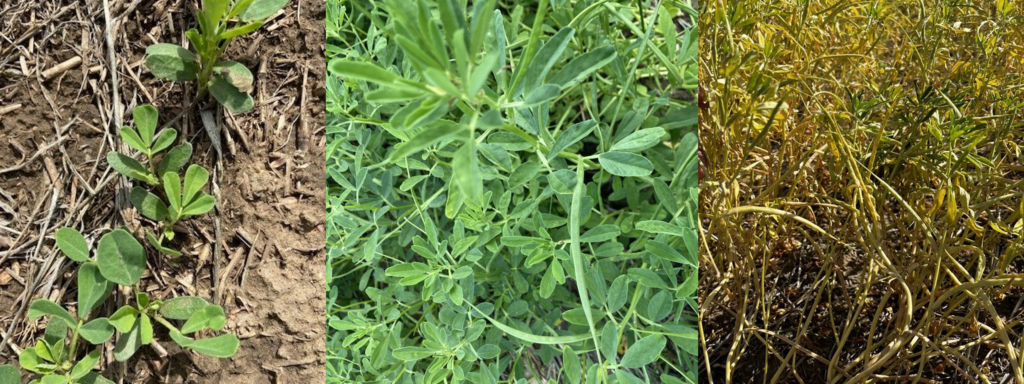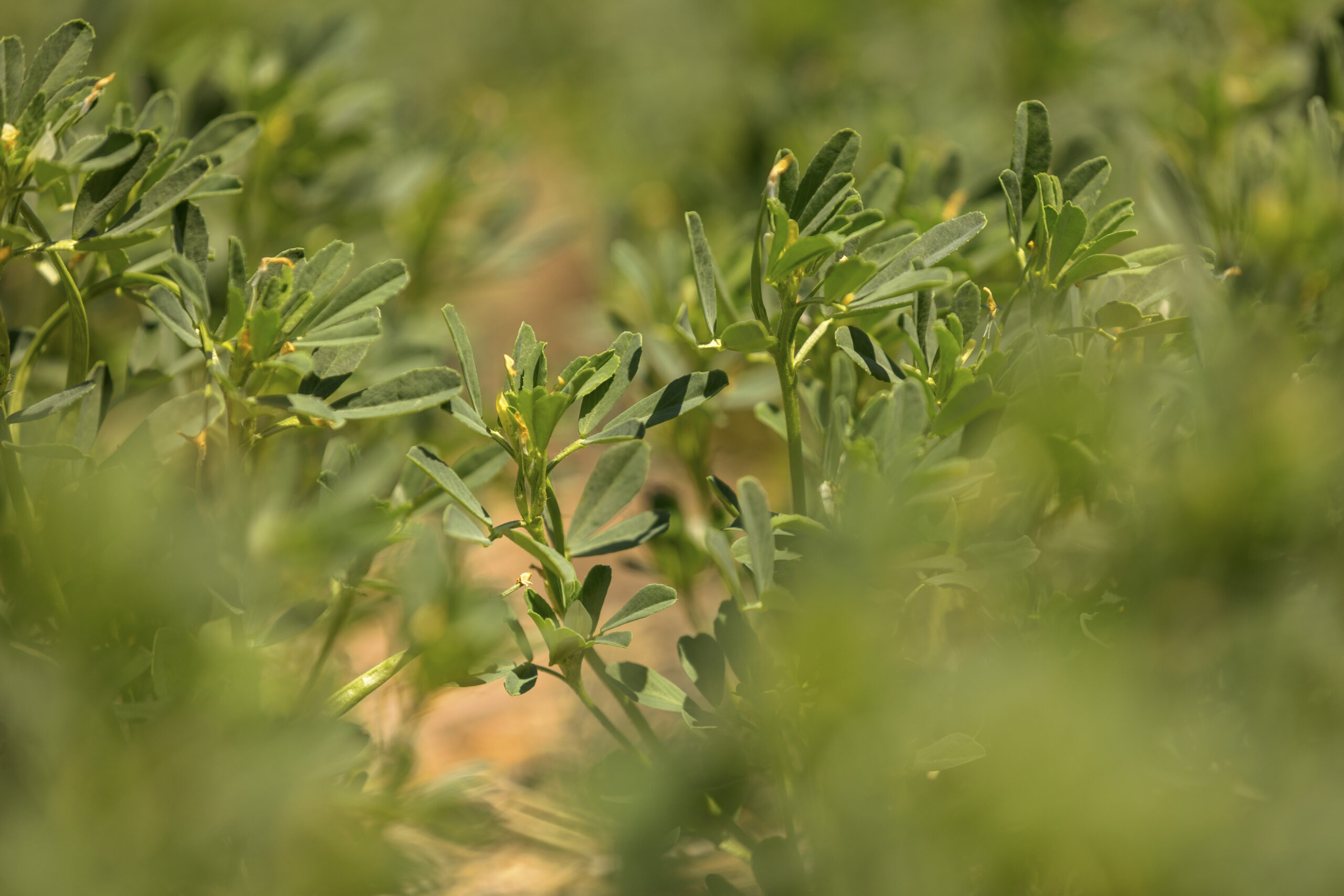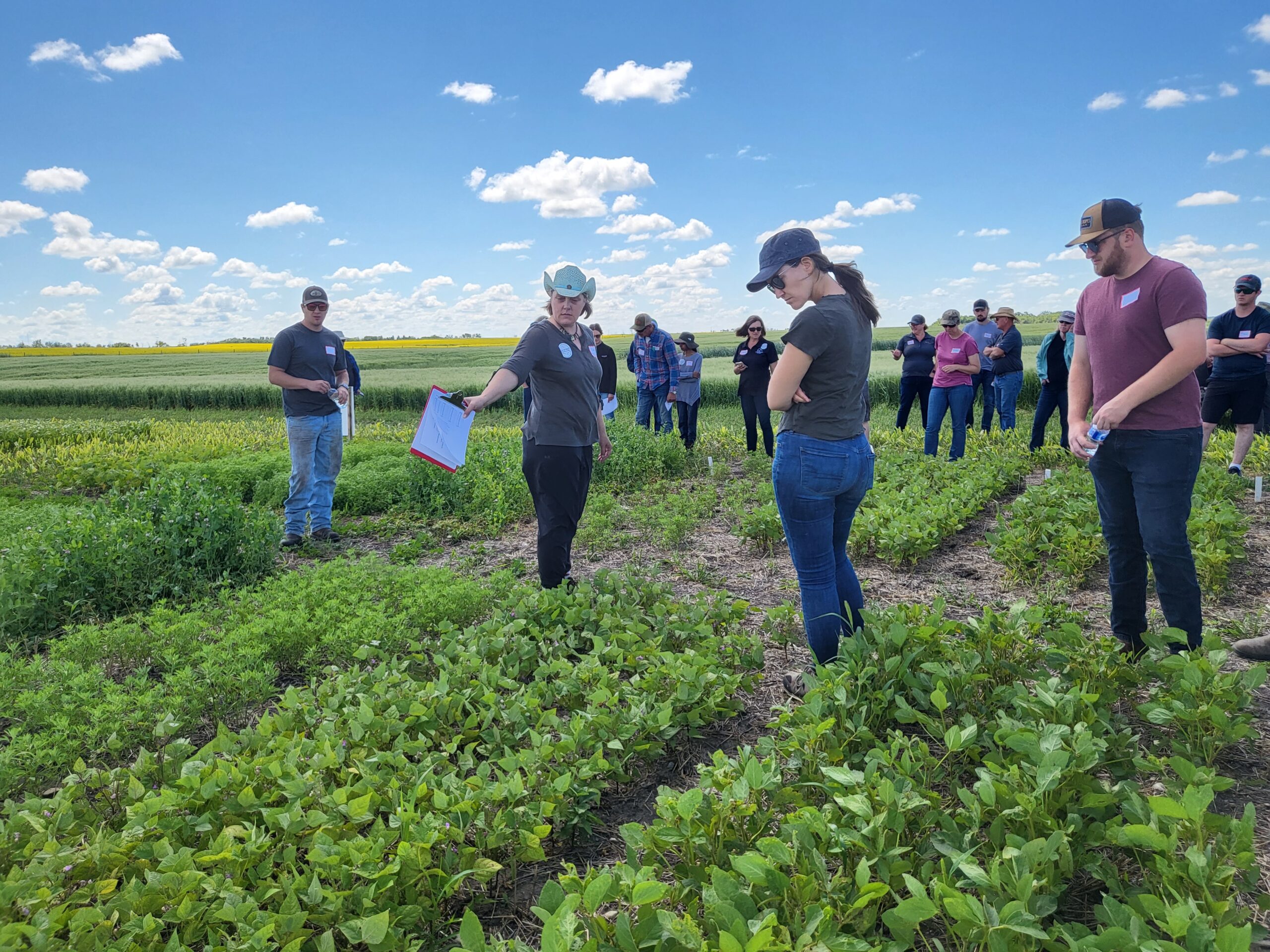By Noelle Chorney
The agronomic benefits of pulse crops in Saskatchewan producers’ crop rotations are well known, but short rotations lead to challenging disease issues across the province. Longer rotations of susceptible crops like peas and lentils are strongly recommended to fight Aphanomyces root rot. One solution for maintaining the benefits of pulses within longer rotations of peas and lentils is to explore the adoption of minor, new, and novel pulse crops.
In 2022, Saskatchewan Pulse Growers (SPG) conducted a multi- site demonstration of several new and novel pulse crops at eight Agriculture-Applied Research Management (Agri-ARM) sites across the province to better understand the agronomic and environmental requirements for the adoption of alternative pulses into current crop rotations. SPG Agronomy Manager Meagen Reed says, “We work with the Argi-ARM network to utilize their distribution across the province to test out new pulse genetics at multiple sites, soil conditions, climates, etc. in a single year allowing us to rapidly generate multiple site years of data.”
Minor Pulse Crops
Minor pulse crops and legumes such as chickpea, faba bean, and soybean can all be grown successfully in Saskatchewan. They are included in SPG’s mandate but see smaller acreage than field peas and lentils.
Chickpea
Chickpeas are heat tolerant with deep roots and are best suited to the brown soil zone but with the right environmental conditions can also be grown in areas of the dark brown soil zone. They need a terminating drought to fully ripen and are susceptible to Aschochyta blight, which limits their production to drier areas. Chickpeas are a non-host crop for Aphanomyces and offer growers struggling with root rot an alternative to lentils in brown and dark brown soils.
Desi and Kabuli chickpeas are the two chickpea classes grown in Saskatchewan. Over the last four years, Dr. Bunyamin Ta’ran, the lead chickpea breeder at the Crop Development Centre (CDC), and his team have successfully released two new Kabuli varieties, CDC Lancer and CDC Orkney, and one new Desi variety, CDC Kala, all of which contain imazamox herbicide tolerance genes.
One of the major reasons chickpeas are so well suited to the brown soil zone is due to their indeterminate growth habit. Under proper growing conditions chickpea maturity can range from 110 to 120 days in Kabuli varieties but a cool, wet season lacking a terminating drought can easily extend chickpea maturity past 120 days.
SPG Agronomy Manager Michael Brown says, “Recent SPG-funded research on chickpea includes building a genetic roadmap to improve the crop, a genetic analysis of the effects of flowering genes on agronomic performance and stress tolerance. Current research projects include studying the impacts of herbicides, moisture, disease, and fungicides on chickpeas. Future research is planned to study flax-chickpea intercropping in regard to fungicide regime and variety selection.”
Faba Bean
Faba beans are a mid-range maturing pulse crop, approximately 105– 110 days, best adapted to moist areas in Saskatchewan, and grow best under cooler growing conditions. They have good partial resistance to Aphanomyces infection, exceptional nitrogen-fixing ability (88% of its nitrogen comes from the atmosphere), and high protein content (24–35%).
Many faba bean varieties contain the anti-nutritionals vicine and convicine, which can cause rapid onset anemia in a small percentage of the human population. The release of low vicine/convicine (LVC) varieties opens the door for larger scale adoption driven by improved access to marketing opportunities particularly in the human consumption market and research.
LVC varieties are currently being adopted by Saskatchewan growers, but production challenges exist due to the outcrossing nature of faba beans. Pollinators can travel quite a distance, up to 5 km, so it is important to plant LVC varieties away from other types of faba beans and test the seed to ensure LVC status meets the acceptable levels.
There are LVC varieties available commercially as listed in the Saskatchewan Seed Guide. For the white flower low tannin types: Navi (KGB Meier Farms) and Nevado (Stamp Seeds). The coloured flower high tannin LVC faba bean varieties available include: Fabelle (from True Seeds Ltd.), Victus (from Valesco Genetics), and Allison (from Prairie Fava).
SPG is doing further agronomic research and label expansion to support increased adoption of faba bean. Reed says, “Among other projects, we are actively working on disease profiling for faba beans, fungicide screening, and label expansion.”

Soybean
Soybeans are best suited to high moisture and warm temperatures with a maturity range of 100 to 130 days. They are well adapted to Southern and Eastern Saskatchewan. However, they are highly susceptible to frost damage and sensitive to drought, requiring timely moisture during pod-fill.
Unlike other pulse crops and legumes, soybean offers more options for weed control, since most varieties are herbicide tolerant to glyphosate, glufosinate, dicamba, and/or 2, 4-D depending on variety. Soybean is also a non-host crop for Aphanomyces root rot but can be susceptible to iron deficiency chlorosis.
New varieties hitting the market in 2023 provide Saskatchewan growers with earlier-maturing, high-yielding options as most are classified under low 00 or 000 maturity ratings.
New & Novel Pulse Crops & Legumes
Dry bean has a small amount of acreage in Saskatchewan, while fenugreek has even less. Lupin has recently emerged as a new option for growers and has shown promising results in field trials and garnered significant interest by growers.
Dry Bean
Several classes of dry bean including pinto, black, yellow, and navy beans are grown in Saskatchewan. Like soybeans, they are temperature and moisture driven, maturing in 105 to 110 days. They are well-suited to irrigation and can be easily damaged or killed by frost. Although successfully grown under irrigation, like soybeans, dry beans are well adapted to dry land production and narrower row spacing compared to other row crops, making them a good fit for Saskatchewan producers.
Overall, dry beans are less efficient nitrogen fixers than other pulse crops and often require supplemental nitrogen fertilizer. Although dry beans are a host crop for Aphanomyces, many varieties have good root rot resistance, particularly CDC Blackstrap, which is the most common dry bean variety grown in Saskatchewan.
Fenugreek
Fenugreek is a warm season, heat- and moisture-loving legume that has market potential as a spice, vegetable, animal feed, health food ingredient, and in industrial applications. It is a non-host crop for Aphanomyces root rot and shows promise in crop rotations in areas with warm growing seasons and ample rain.
No commercial inoculants are currently available for fenugreek. “Research is ongoing to develop an inoculant and expand product labels for fenugreek production. It is currently going through herbicide screening – we are in the process of shortlisting products that show the most promise,” says Reed.

Lupin
Lupin has high protein and low starch levels, making it appealing to fractionators who struggle with starch by-products. Sweet white lupin and narrow-leaved blue lupin are the two market classes currently being developed for production. White lupin prefers similar growing conditions and season length as soybean, while blue lupins prefer conditions and season length like faba beans. Generally speaking, lupin is best suited to black and dark brown soil zones and both classes are highly sensitive to neutral and high pH soils preferring soils with pH less than 7.8 for white lupin and 7.2 for blue lupin.
Reed says, “Lupins were the highlight of the Novel Pulse Demonstration Project. They perform similarly to faba beans, have a similar growing season, decent yield, and a lot of niche marketing opportunities for Saskatchewan producers when processing facilities are established. Lupin is an exciting new pulse crop because it is also a non-host crop for Aphanomyces.”
More Research Underway
Other alternative pulse crops being explored include cow pea, mung bean, Adzuki bean, and tepary bean. Further research is underway to support growers throughout the value chain: developing inoculants and herbicide regimes for new crops; working on shorter season, drought tolerant, higher protein varieties, and building up seed inventories; exploring new markets and breaking down market access barriers; developing value-added processes; and constructing fractionation facilities.
Published May 2023



